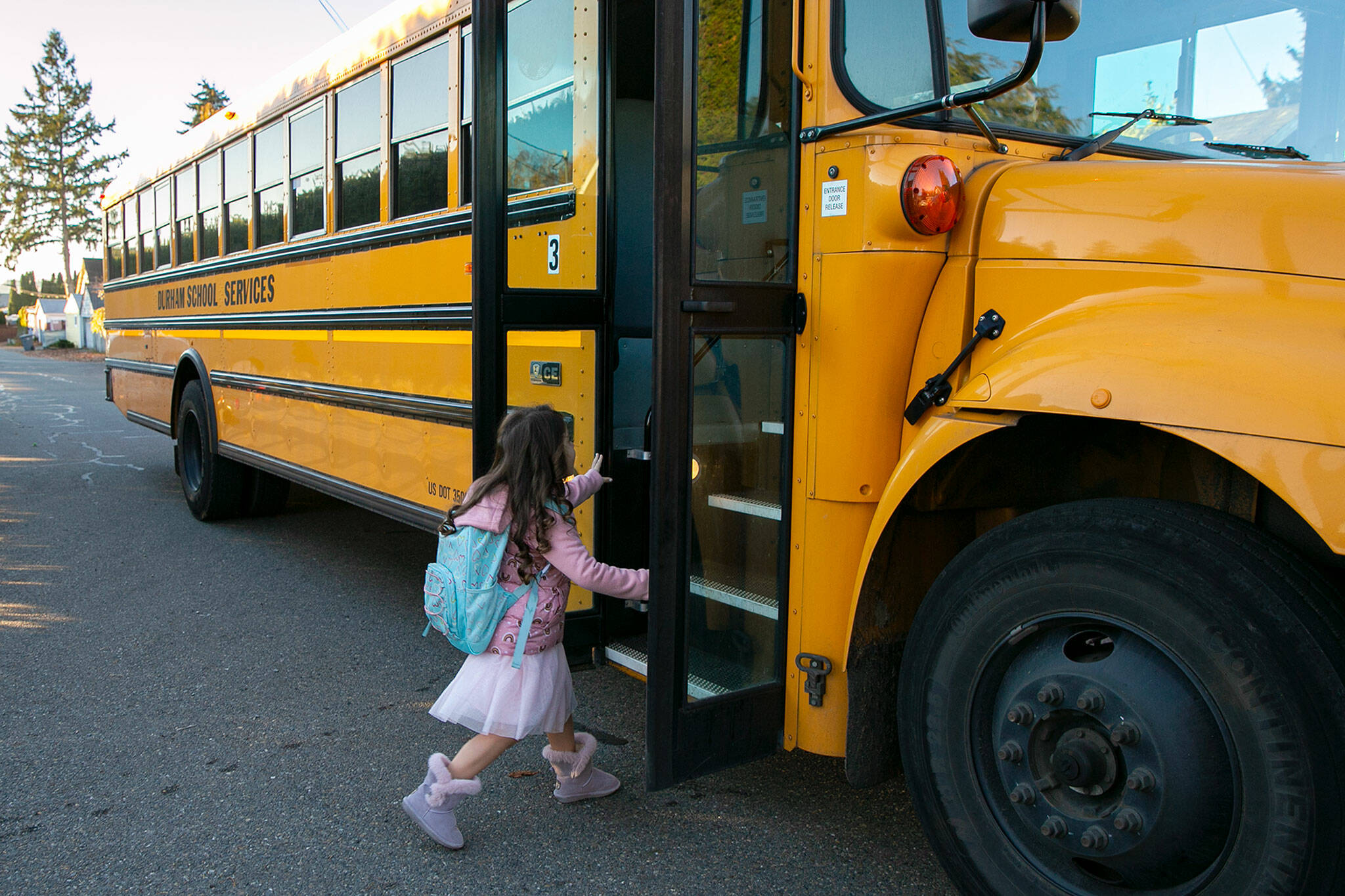EVERETT — As a child and family advocate, Lynn Barashkoff gets a special peek into the complexities of why kids miss class.
It’s not always for the reasons you might expect, she said.
Barashkoff, who works with the Interfaith Family Shelter, recounted one family with a first-grader who was chronically absent, meaning he missed at least 10% of the school year. In Washington, that’s at least 18 days, or about two absences per month.
Instead of attending class, he was staying home with bug bites that had become infected, Barashkoff said.
To solve the problem and get him to school, Barashkoff suggested a dust mite cover for his mattress. Soon after that, the child was back in class.
“They put it on, and (his) mom texted me the next day and was like, ‘Lynn, he had the best sleep, and he has no new bites,’” Barashkoff said. “It was a $25 fix. When parents are in the heat of the problem, sometimes they don’t see (the answer).”
Barashkoff is one of about 10 social workers involved with Improving School Attendance, a collaboration of local nonprofits focused on removing the root causes for a child’s chronic absences from school. ISA works specifically with families who are homeless or live in transitional shelters within the Everett Public Schools district boundaries, and have children age 8 or younger.
Homeless students are chronically absent from school at a rate at least twice that of the overall student population, according to SchoolHouse Connection, a national nonprofit focused on improving early care and education for homeless youth. And students who miss a lot of school are significantly more likely to drop out, make less money and experience homelessness as young adults.
“Educational success is integral to breaking the intergenerational cycle of poverty and homelessness,” said Monica Wilson, collaborative coordinator for ISA.
An advocate works with up to six families. They meet with each family for at least four hours a week for two to three years, so they can offer valuable insight about why they’re missing class.
That’s a huge help for public schools, which are required to work with families to improve students’ attendance when they are frequently truant but don’t always have a clear picture of a child’s home life, said Denise Hollenbeck, a child family specialist with Housing Hope.
“We ask so much of our schools. One of the services (ISA) provides is that we can singularly pick out what’s going on with our families and make some strategic moves for each family that might help them,” Hollenbeck said.
Many of the reasons a child misses school depends on a family’s unique situation. Do they have a car? Are they close to a public bus station? Do they have consistent access to a phone and Wi-Fi? Are there medical appointments or work shifts a parent must attend that could prevent them from taking their child to school?
And sometimes, the problem is rather specific. Hollenbeck shared an example of a child whose feet grew over the summer. Before he could start school, his family needed to find affordable shoes in size 13.
“Everything has 100 solutions, and one solution works for one person and another solution works for someone else,” she said.
ISA’s work connects case managers and family advocates to one another, so they can share their experiences. They trade ideas for handling tricky barriers, and they offer their expertise to each other.
They have begun to identify trends or systemic challenges, said Wilson, the collaborative coordinator. For example, it “came up over and over and over again” that lack of transportation is a big reason students miss school. That indicates that community classes about public transit could help a lot of families and improve the system as a whole, Wilson said.
“I think it’s taken us this long to really understand our families and their needs, and now we are noticing similar trajectories,” she said. “I feel like now we can start working on bigger changes because we have so many examples in learning from the families we have worked with over the past four years.”
ISA started in 2018 with a grant from United Way of Snohomish County. Since then, it has grown to include more than 20 partner organizations across multiple sectors.
The work is making a difference for families, Wilson said. A 2022 health and well-being report from Providence found that overall well-being of ISA participants rose an average of 18% during a six month period. That was on par or better than other groups surveyed in the county.
The report also found that families who participated in ISA for about 2 years saw a 44% drop in food insecurity and a significant improvement to transportation access. The report notes that about 50% of the ISA families faced a transportation barrier when they enrolled, but that dropped to less than 10% after two years.
State attendance data also reflects an improvement since ISA started. In the 2016-17 and 2017-18 school years, about half of the homeless students enrolled in Everett Public Schools missed two or more days of school per month. By 2019-20, that total dropped to about 30%.
“I think the relationships we are building in the community are creating a difference, are cutting down some the barriers that existed before,” Wilson said.
Mallory Gruben is a Report for America corps member who writes about education for The Daily Herald.
Mallory Gruben: 425-339-3035; mallory.gruben@heraldnet.com; Twitter: @MalloryGruben.
Talk to us
> Give us your news tips.
> Send us a letter to the editor.
> More Herald contact information.

























